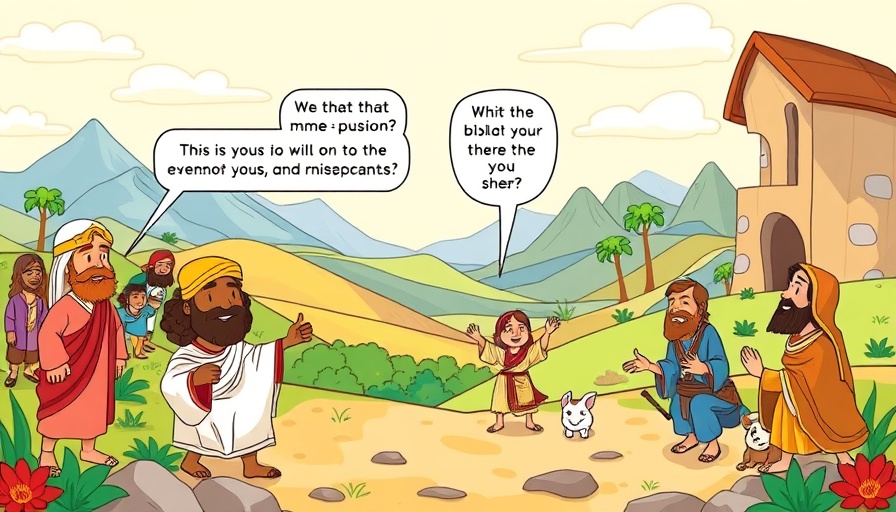
Understanding the Exodus Way in the Gospel of Matthew
The concept of the Exodus Way isn’t just a historical account; it resonates deeply with countless believers, particularly within the Seventh-day Adventist (SDA) faith community. The Gospel of Matthew intricately links the life of Jesus with the experiences of the Israelites during their Exodus journey. This connective thread invites believers to view Jesus’ baptism, temptation, and ministry through a lens of spiritual growth, highlighting triumphs over spiritual oppression and failures.
In 'The Gospel of Matthew and the Exodus Way,' the discussion dives into the connection between Jesus’ life and the journey of the Israelites, exploring key insights that sparked deeper analysis on our end.
Baptism: Passing Through Chaos Waters
In Matthew 3, Jesus’ baptism in the Jordan River symbolizes a passage through chaos—similar to the Israelites crossing the Red Sea. Both instances represent pivotal moments where faith plays a crucial role. For many, this act of baptism invites a fresh start, much like the Israelites gaining freedom from Egypt. It is an opportunity to begin anew, shedding burdens and embracing faith in God’s promises.
Wilderness Testing: Trusting in Divine Provision
Following His baptism, Jesus is led into the wilderness, mirroring the Israelites’ 40 years of testing. The wilderness experience, fraught with temptations by the Satan, serves as a powerful reminder of the challenges faced in life. Each time Jesus responds by quoting Scripture, reinforcing the importance of trusting and relying on God during trials. This modeling of trust in divine provision speaks volumes to the SDA community, promoting the idea that faith must be steadfast even amid struggles.
Good News and Healing: The Call to Action
After Jesus completes His testing, He begins His ministry, preaching the Gospel of the Kingdom and performing miracles. In this ministry, we see a beautiful continuity with the Exodus narrative. Just as God provided for His people in their journey, Jesus now embodies that provision by healing the sick and freeing those oppressed. This invites the SDA community to consider how they can be instruments of God’s healing and love in their communities, mirroring the actions of Jesus in their daily lives.
The Promise of God: A Pathway for All
Both the Exodus and the life of Jesus illustrate a significant truth: even amidst human failures, God’s promise remains. Just like the Israelites who faltered but were eventually led to the Promised Land, Jesus calls each of us to join Him on this Exodus Way. It’s a path where redemption, growth, and hope flourish despite our shortcomings.
Connecting Spiritual History to Today
The intertwining of Jesus' journey with the Exodus serves as a powerful narrative for the SDA community today, emphasizing the need for resilience and faith. These biblical patterns illustrate that life often includes wilderness periods, yet they also reveal that God is perpetually working towards our good, urging us to embrace this distinctively divine journey. Each obstacle faced offers a chance to strengthen faith and to align more closely with God’s will.
Encouragement for the Journey Ahead
With the backdrop of the Exodus Way as the guide, members of the SDA community are encouraged to reflect on their personal journeys. What wilderness experiences have you faced? How have you seen God’s provision during those challenges? Recognizing these parallels can instill a sense of purpose in everyday challenges, nurturing hope and perseverance. It reminds us that God continually invites us to take the leap of faith, to trust Him even when the path seems uncertain.
Indeed, the Gospel of Matthew presents a rich tapestry woven through shared human experiences. It evokes a profound understanding that just like the Israelites, we too are on a spiritual Exodus—a journey toward wholeness and divine promise. So, let’s embrace the Exodus Way together, supporting one another with love and faithfulness as we navigate our paths.
So, how are you responding to Jesus’ invitation to the Exodus Way? As members of the SDA faith community, let’s explore how we can embody the message of hope and healing in our lives and those around us.
 Add Row
Add Row  Add
Add 




Write A Comment